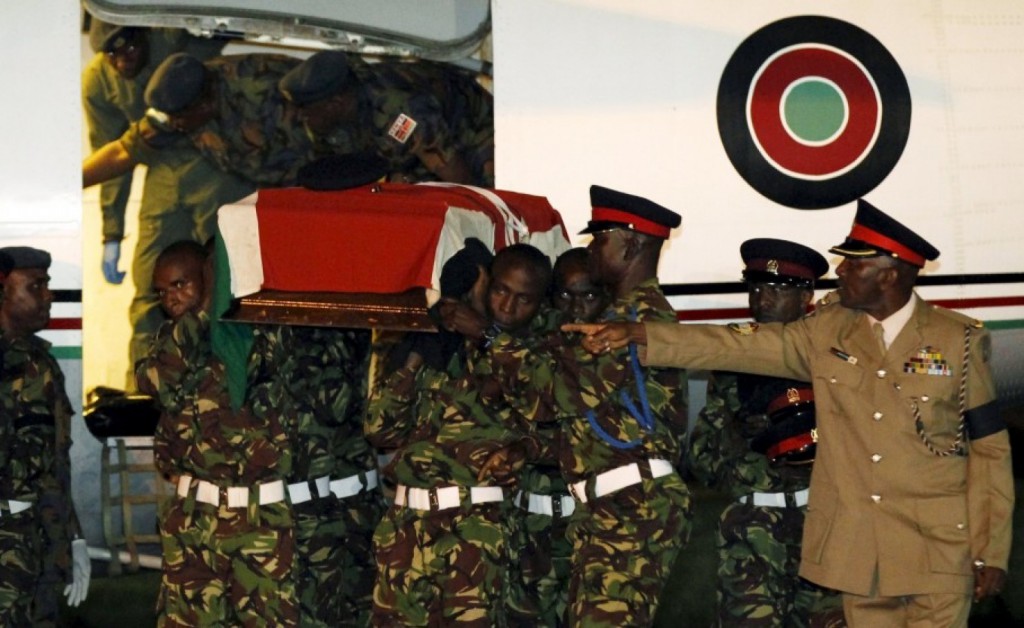Araweelo News Network

Members of the Kenya Defense Forces in Nairobi carry the casket of a comrade serving in the African Union Mission in Somalia, who was killed during an attack last week by Somalia’s al Shabaab Islamist group. (Thomas Mukoya/ Reuters)
Mogadishu(ANN)On Jan. 15, al-Shabaab’s Saleh Nabhan brigade claimed responsibility for overrunning a forward operating base of the African Union Mission in Somalia (AMISOM) at El Adde in Somalia’s Gedo region, near the border with Kenya. Al-Shabaab claimed that it killed “more than 100” of the company of Kenyan soldiers deployed in El Adde and took additional hostages. It kept silent about its own losses. The Kenyan government and AMISOM acknowledged there were fatalities on both sides but have not provided further details.
Who are the players?
AMISOM is the African Union’s longest running and largest-ever peace support operation. AMISOM was deployed in March 2007 to help protect the Transitional Federal Government in Mogadishu from its opponents, most notably al-Shabaab militants. AMISOM is now mandated to reduce the threat posed by al-Shabaab and assist the Somali government to expand its control throughout Somalia
Al-Shabaab emerged in 2005 as a violent Islamist group intent on enforcing its brand of justice across Somalia. In late 2006, it focused on expelling the Ethiopian forces that had intervened in Somalia and later aligned itself with al-Qa’ida.
Why does this attack matter?
El Adde was the third AMISOM forward operating base that al-Shabaab has overrun in the last seven months. In June 2015, al-Shabaab forces attacked and plundered AMISOM’s base at Leego, killing more than 50 Burundian soldiers and stealing equipment, vehicles and arms. In September, the militants stormed AMISOM’s base at Janaale, killing 19 Ugandan soldiers and taking others hostage.
If Kenya did indeed lose more than 100 soldiers last week, the attack on El Adde represents AMISOM’s bloodiest day since it deployed to Mogadishu in March 2007. Regardless of how many died, however, the attack highlights some important lessons for AMISOM and its international partners.
What are the lessons?
1. The threat from al-Shabaab has changed, and its ambitions have expanded
Al-Shabaab no longer poses the existential threat to Somalia’s governing authorities in Mogadishu that it once did, in its “golden age” during 2009-10, when it controlled not only most of the capital city but also most of south-central Somalia. Most of al-Shabaab’s fighters were forced out of Mogadishu in August 2011; today they do not directly govern nearly as many towns across south-central Somalia. But al-Shabaab’s fighters can still move freely, and exert influence over local populations across much of south-central Somalia.
Since mid-2013, al-Shabaab has become an increasingly extremist and transnational network with the stated aim of creating a caliphate across east Africa. It has therefore dramatically increased its recruitment and activities in Kenya. Since then, al-Shabaab has fought to destabilize parts of Kenya – to take back what it claims are Muslim lands – and south-central Somalia in order to undermine AMISOM, reveal the weaknesses of Somalia’s central government and its collusion with foreign forces, and control local populations.




